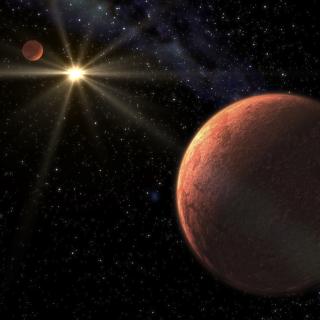Bibcode
Bluhm, P.; Pallé, E.; Molaverdikhani, K.; Kemmer, J.; Hatzes, A. P.; Kossakowski, D.; Stock, S.; Caballero, J. A.; Lillo-Box, J.; Béjar, V. J. S.; Soto, M. G.; Amado, P. J.; Brown, P.; Cadieux, C.; Cloutier, R.; Collins, K. A.; Collins, K. I.; Cortés-Contreras, M.; Doyon, R.; Dreizler, S.; Espinoza, N.; Fukui, A.; González-Álvarez, E.; Henning, Th.; Horne, K.; Jeffers, S. V.; Jenkins, J. M.; Jensen, E. L. N.; Kaminski, A.; Kielkopf, J. F.; Kusakabe, N.; Kürster, M.; Lafrenière, D.; Luque, R.; Murgas, F.; Montes, D.; Morales, J. C.; Narita, N.; Passegger, V. M.; Quirrenbach, A.; Schöfer, P.; Reffert, S.; Reiners, A.; Ribas, I.; Ricker, G. R.; Seager, S.; Schweitzer, A.; Schwarz, R. P.; Tamura, M.; Trifonov, T.; Vanderspek, R.; Winn, J.; Zechmeister, M.; Zapatero Osorio, M. R.
Referencia bibliográfica
Astronomy and Astrophysics
Fecha de publicación:
6
2021
Revista
Número de citas
40
Número de citas referidas
38
Descripción
Dynamical histories of planetary systems, as well as the atmospheric evolution of highly irradiated planets, can be studied by characterizing the ultra-short-period planet population, which the TESS mission is particularly well suited to discover. Here, we report on the follow-up of a transit signal detected in the TESS sector 19 photometric time series of the M3.0 V star TOI-1685 (2MASS J04342248+4302148). We confirm the planetary nature of the transit signal, which has a period of Pb = 0.6691403−0.0000021+0.0000023 d, using precise radial velocity measurements taken with the CARMENES spectrograph. From the joint photometry and radial velocity analysis, we estimate the following parameters for TOI-1685 b: a mass of Mb = 3.78−0.63+0.63 M⊕, a radius of Rb = 1.70−0.07+0.07 R⊕, which together result in a bulk density of ρb = 4.21−0.82+0.95 g cm−3, and an equilibrium temperature of Teq = 1069−16+16 K. TOI-1685 b is the least dense ultra-short-period planet around an M dwarf known to date. TOI-1685 b is also one of the hottest transiting super-Earth planets with accurate dynamical mass measurements, which makes it a particularly attractive target for thermal emission spectroscopy. Additionally, we report with moderate evidence an additional non-transiting planet candidate in the system, TOI-1685 [c], which has an orbital period of Pc = 9.02−0.12+0.10 d.
Proyectos relacionados

Estrellas de Baja Masa, Enanas Marrones y Planetas
Se investigan los procesos que conducen a la formación de estrellas de baja masa, enanas marrones y exoplanetas y caracterizar las propiedades físicas de estos astros en varias etapas evolutivas. Las estrellas de muy baja masa y las enanas marrones son probablemente los objetos más numerosos de nuestra Galaxia, pero no por ello están
Rafael
Rebolo López

Exoplanetas y Astrobiología
La búsqueda de vida en el Universo se ha visto impulsada por los recientes descubrimientos de planetas alrededor de otras estrellas (los llamados exoplanetas), convirtiéndose en uno de los campos más activos dentro de la Astrofísica moderna. En los últimos años los descubrimientos cada vez más numerosos de nuevos exoplanetas y los últimos avances
Enric
Pallé Bago